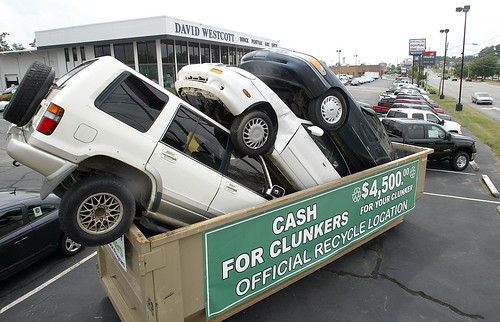Senate resuscitates Hydrogen Car Project with $187M funding approval
(Sources: Washington Post, Fuel Cell Today & Huliq News)
The hydrogen car may have legions of fervent fans, but Energy Secretary Steven Chu apparently is not among them. Earlier this year, the Nobel prize-winning scientist essentially zeroed government funding for the clean vehicles and came close to mocking their potential, saying the technology needs four “miracles” before it can become widely adopted.
“Saints only need three,” he cracked in a magazine interview.
But the hydrogen car is back. On Thursday, the Senate agreed to restore nearly all the money for hydrogen car research that the administration had proposed to cut.
The measure, part of an appropriations bill previously approved by the House, is expected to be signed by President Obama.
“It’s the right set of priorities,” said Sen. Byron L. Dorgan (D-N.D.), a leader in the effort to fund the technology. “If you discontinue the research, you shortchange the future.”
This year’s revival of government funding is unlikely to end the broader dispute over hydrogen cars, however. Before the cars can become much more than an experiment on American roads — it is estimated that there are fewer than 200 operating in the United States — the industry may need as much as $55 billion more in government support over the next 15 years, according to industry sources and a National Research Council report last year. That money would pay for more research and subsidies to build fueling stations.
By comparison, the amount appropriated Thursday is meager: $187 million. But even that level of government support has critics, who say the possibilities and benefits of the technology have been wildly exaggerated. In a press release published on the Fuel Cell Today, the USFCC said ” The bill approved by Congress is a significant win for fuel cells overall. The Obama administration requested $68 million for the EERE program. Under the final Congressional compromise, funding for fuel cells and hydrogen will receive $174 million, or $106 million higher than the Obama administration’s request.”
Funding for research into production of the hydrogen car is highly controversial. There are currently less than 200 of these cars operating in the United States.
The issue is the additional funding that will be required to establish fueling stations across the country to support these vehicles. It is currently estimated that an additional $55 billion of government support could be required to make that a reality.
Nevertheless, hydrogen cars might represent the future for automobiles in this country. These cars are fueled with hydrogen gas which combines with oxygen in the air. The only byproduct of this fuel is water vapor. This means that hydrogen fuel cell cars may provide the best means of reaching the goal of emission-free vehicles.
The reality of hydrogen powered vehicles is really not such a stretch. In Iceland, the first country to begin making a truly concerted effort to break free from the constraints and costs of fossil fuel, hydrogen powered cars and ships are already a reality. Iceland has been working on this technology for years, and does have an advantage over many other countries in the world because so much of the energy sources in Iceland are from renewable sources, such as geo-thermal and hydro-electric power.
The governments of Norway, Japan and Germany also are investing hundreds of millions in the technology, with the Germans aiming to build 1,000 stations by 2015, according to auto industry sources.
Here are some articles on the investments around the world:
- Europe’s love affair with hyrdogen technology continues; Germany Launches H2 Mobility Initiative to Expand Infrastructure for Refueling Hydrogen Vehicles
- Norway leaps ahead with its love for Hydrogen fuel – Dedicates 580 kilometer hydrogen highway
Click here to read more.



